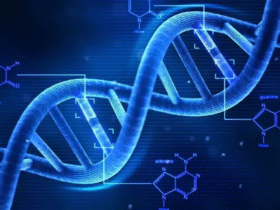What is Dorsalgia?
Dorsalgia, commonly known as back pain, is a condition that affects millions of people worldwide. It encompasses a range of pains associated with the dorsal (back) region of the body. Proper understanding of dorsalgia is crucial for its effective management and treatment.
Role of Physical Therapy in Managing Dorsalgia
Physical therapy is crucial in the management of dorsalgia as it enhances mobility, strengthens the muscles supporting the spine, and alleviates pain. A well-designed physical therapy regimen can significantly improve a patient’s quality of life.
Understanding the Causes and Symptoms of Dorsalgia
Common Causes of Dorsalgia
The origins of dorsalgia can vary from simple factors like poor posture to more complex issues such as injury, wear and tear, or degenerative disc disease. Identifying the underlying cause is essential for effective treatment.
Symptoms to Watch For
Symptoms of dorsalgia include persistent or intermittent back pain that may be sharp or dull, restricted mobility, and discomfort during daily activities.
Expanded Physical Therapy Techniques for Dorsalgia
Initial Assessment and Treatment Planning
At Halifax Physical Therapy, the first step in addressing dorsalgia involves a comprehensive initial assessment conducted by a skilled physical therapist. This evaluation is crucial for understanding the specific characteristics of each patient’s back pain, including its onset, duration, and factors that exacerbate or relieve the pain. The therapist will also assess mobility, muscle strength, and functional limitations to tailor a treatment plan that precisely meets the needs of the patient based on the severity of their symptoms.
Core Strengthening Exercises
A core component of the treatment plan at Halifax Physical Therapy includes strengthening the core muscles. These muscles are pivotal in providing adequate support for the spine. Strengthening them can lead to better posture, reduced strain on the back, and decreased likelihood of injury. Effective exercises recommended by Halifax therapists often include planks, which enhance stability, and abdominal crunches, which focus on strengthening the abdominal muscles, thereby supporting the lower back.
Flexibility and Stretching Routines
Increasing flexibility plays a key role in managing dorsalgia. At Halifax Physical Therapy, customized stretching routines are designed to improve the flexibility of the spine and surrounding muscles, thereby reducing the pressure exerted on spinal structures. Regular stretching is emphasized to maintain back health and prevent potential injuries. These routines may include stretches such as the hamstring stretch, the lumbar extension stretch, and yoga-inspired positions, all of which help in maintaining and enhancing spinal flexibility.

Manual Therapy Techniques
Manual therapy at Halifax Physical Therapy is another effective technique for managing dorsalgia. This approach involves hands-on techniques, such as massage to alleviate muscle tension and mobilization of joints to enhance movement in stiff joints and spinal segments. These techniques help improve blood circulation to the affected regions, promoting faster healing and recovery, while also providing significant pain relief.
Pain Management Strategies
Pain management strategies at Halifax Physical Therapy are integral to the treatment of dorsalgia. Therapists utilize a variety of techniques to mitigate discomfort, including the application of heat and cold therapy, which can help reduce inflammation and numb the pain. Electrical stimulation and ultrasound therapy are other modalities used to stimulate the muscles and nerves, promoting pain relief and accelerating the healing process. These strategies are tailored to each patient’s tolerance and response to treatment, ensuring optimal pain management.
Each of these elements is critical in the holistic approach to treating dorsalgia at Halifax Physical Therapy, where the goal is not only to alleviate pain but also to improve overall function and quality of life.
Implementing a Physical Therapy Routine at Home with Ahoskie Health and Rehab
Setting Up a Safe Home Environment
At Ahoskie Health and Rehab, part of the approach to treating dorsalgia extends beyond the clinic into the patient’s home. Ensuring a safe home environment is emphasized as a crucial factor in preventing the exacerbation of back pain. To minimize risks and enhance safety:
- Flooring: Ensure that walking surfaces are slip-resistant to avoid falls that could exacerbate back pain. Remove or secure area rugs and keep floors clear of clutter.
- Supportive Seating: Invest in chairs and sofas that provide good lumbar support. Adjustable chairs that can be tailored to the individual’s height and weight are recommended. Using ergonomic accessories, like lumbar rolls or seat cushions, can also aid in maintaining an optimal seating posture.
Exercises to Do at Home
Therapists at Ahoskie Health and Rehab will provide patients with a tailored set of exercises designed to be safely performed at home. These exercises are crucial for continuing improvement and preventing regression in their condition. The home exercise program may include:
- Core Strengthening: Exercises such as pelvic tilts and partial crunches to enhance core muscle stability, which supports the spine.
- Stretching: Daily routines that include lower back flexibility exercises, such as knee-to-chest stretches and the cat-cow stretch, to maintain spinal health.
- Aerobic Conditioning: Depending on the patient’s condition, low-impact aerobic activities such as walking or using a stationary bike might be recommended to improve endurance and facilitate nutrient and oxygen circulation to spinal tissues.
Patients are encouraged to integrate these exercises into their daily routine, ensuring consistency with professional guidance to maximize their effectiveness.

When to Consult a Professional
Ahoskie Health and Rehab emphasizes the importance of knowing when to seek professional advice:
- Persistent or Increasing Pain: If pain does not decrease with prescribed at-home exercises or if symptoms worsen, it is crucial to consult the physical therapist.
- New Symptoms: Development of new symptoms such as numbness, tingling, or weakness in the limbs should prompt an immediate call to a healthcare provider.
- Lack of Improvement: If there is no noticeable improvement after following the prescribed home exercises and guidelines for a specified period, professional reassessment may be necessary to adjust the treatment plan.
Understanding when to seek further help is vital in managing dorsalgia effectively and ensuring that the condition does not deteriorate. By maintaining close communication with their therapists at Ahoskie Health and Rehab, patients can ensure they are on the right track toward recovery and avoid potential setbacks.
Advanced Physical Therapy Options
Use of Technology in Physical Therapy
Modern technology such as virtual reality and biofeedback can complement traditional physical therapy techniques and offer innovative ways to manage dorsalgia.
Integrative Therapies
Incorporating integrative therapies like acupuncture and chiropractic care can enhance pain relief and aid in the recovery process.
Monitoring Progress and Adjustments in Therapy
Tracking Improvements
Monitoring progress is essential to ensure the effectiveness of the treatment plan and to make necessary adjustments.
Adjusting the Therapy Plan
The therapy plan should be adapted based on the patient’s response to treatment, including any improvements or setbacks.
Conclusion and Final Thoughts
Physical therapy is a safe and effective approach to reducing symptoms of dorsalgia. With appropriate strategies and continuous management, individuals can achieve notable pain relief and improved mobility, leading to a better quality of life.












Leave a Reply